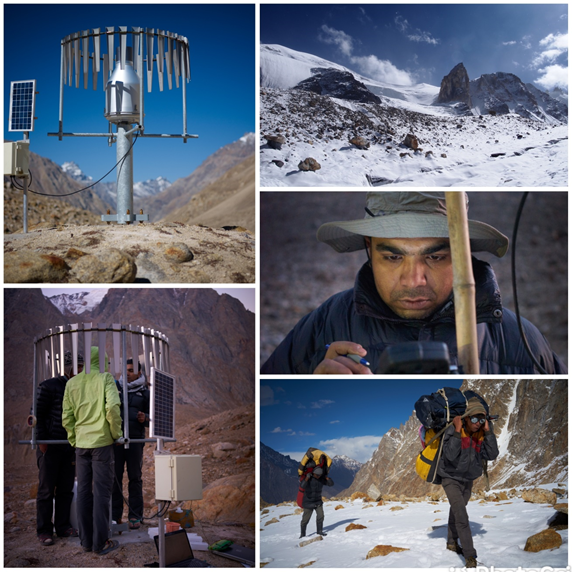Snow and glaciers are melting rapidly in the Himalayan range due to climate change, altering water supplies in the rivers like Indus, Ganga and Brahmaputra in the Himalaya-Karakoram (HK) ranges.

The HK region in South Asia, often called the water tower of Asia or the Third Pole is one of the most heavily glacierized mountain regions on Earth. Understanding the response of HK rivers to climate change is crucial for almost 1 billion people who partly depend on these water resources.
Total river runoff, glacier melt, and seasonality of flow in these rivers are projected to increase until the 2050s, with some exceptions and large uncertainties, according to a study “Glacio-hydrology of the Himalaya-Karakoram” published in the journal ‘SCIENCE’
The research led by Dr Mohd. Farooq Azam, assistant professor at the Indian Institute of Technology Indore gathered the results from more than 250 scholarly research papers to arrive at a more accurate understanding —something approaching a consensus— of the links between climatic warming, precipitation change and glacier shrinkage.
The study shows that glacier and snow melt are important components of HK rivers with greater hydrological importance for the Indus than Ganga and Brahmaputra basins.
“The Himalayan river basins cover an area of 2.75 million km2 and have the largest irrigated area of 577,000 km2, and the world’s largest installed hydropower capacity of 26,432 MW. The melting glaciers fulfils the water requirements of more than a billion people of the region who will be affected when much of the glacier ice mass melts throughout this century and gradually stops supplying the required amount of water,” said Dr Azam.
He added “region-wide, the total impact on each year’s water supply varies. Glacier meltwater, and climate change impacts on glaciers, are more crucial for the Indus basin in comparison to the Ganga and Brahmaputra basins which are predominantly fed by monsoon rains and are affected mainly due to the changing rainfall patterns.”
Smriti Srivastava, a PhD student of Dr. Azam and co-author of the study said “projected trends in river runoff volume and seasonality over the 21st century are consistent across a range of climate change scenarios. Total river runoff, glacier melt, and seasonality of flow are projected to increase until the 2050s, and then decrease, with some exceptions and large uncertainties.”
The work supported by INSPIRE Faculty fellowship funded by the Department of Science and Technology (DST), GoI identified gaps in understanding the impacts of climate change on the Himalayan water resources, and highlighted prospective solutions to bridge these gaps. This INSPIRE Faculty project also resulted in a research documentary earlier (https://youtu.be/sPaqNs-bttI).
Policymakers need to assess the current status and potential future changes of rivers for sustainable water resource management for agriculture, hydropower, drinking, sanitation, and hazard situations.
The authors recommend a tiered approach to address the identified gaps: Tier-1 includes an expanded observation network that places fully automatic weather stations on selected glaciers. They also suggest developing comparison projects to examine glacier area and volumes, glacier dynamics, permafrost thaw, and snow and ice sublimation. Meanwhile, Tier-2 recommendations implement the knowledge of these studies in detailed models of glacier hydrology to reduce the uncertainty in projections of future change.






























